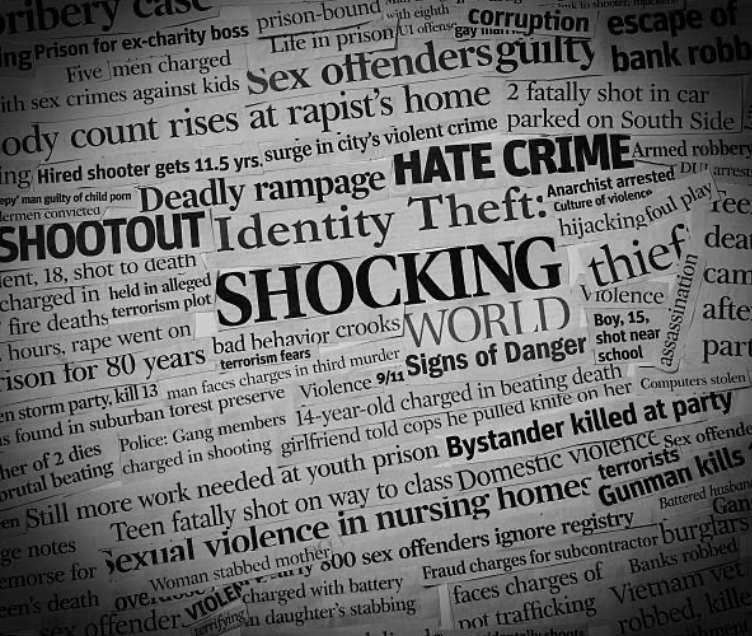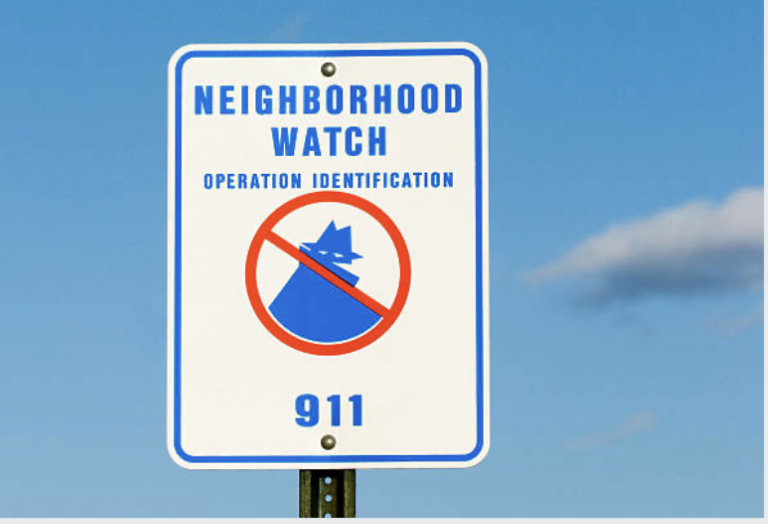Media and Crime Reporting


Introduction
In an age where information flows rapidly and abundantly, the role of media in society has become increasingly influential. Nowhere is this influence more evident than in the aspect of crime reporting. Media serves as the primary source through which the public gains insight into criminal activities, law enforcement, and the workings of the justice system. However, this relationship between media and crime reporting is not a straightforward one. It is a dynamic interplay marked by complexities, ethical considerations, and far-reaching consequences. In this article, we will discuss a comprehensive exploration of the relationship between media and crime reporting.
Media
The media has a very important role to play in society: as an agenda setter; a force multiplier; a watchdog; a gatekeeper; and the fourth estate of the realm. Specifically, the media is expected to protect citizens from power abuse; provide useful and usable news; hold officials in various capacities accountable; point out problems; provide local, national, and international information; and help solve problems.
The media plays an important role in shaping public opinion. In an attempt to carry out these responsibilities, citizens are being bombarded with crime news by the media daily. In general, crime reporting in newspapers comes in the form of editorials, opinions, feature articles, guest columns, letters to the editor, crime correspondents’ reports, interviews, and eyewitness accounts. Crime news in the media varies in its degree of seriousness: from the conventional, such as armed robbery, theft, and assault through to the most bizarre and violent, such as ritual killings, and to the crimes of the highly placed in society, such as fraud and embezzlement.
In modern societies, the media provide important sources of information about matters in which people have no direct experience, and such matters include crime. The media plays an important role in the construction of criminality and the criminal justice system. Research indicates that the majority of public knowledge about crime and justice is derived from the media. Crime stories and representations therefore have always been a prominent part of the media. According to Chan, “People sometimes overestimate the power of the media in shaping rather than reinforcing pre-existing public perceptions of crime.” What is news? What makes stories newsworthy? Sercombe proposes several factors as to why crime news is relatively popular among the reading public in most societies. According to him:
Crime news fits the criteria of negativity: it is concerned with conflict, deviance, damage and injury, and sometimes death. Crime news works in terms of decency, proximity, or unexpectedness, it can often be cast in terms of already-understood stereotypes and is usually clear-cut and unambiguous. It is at the same time both local and dramatic,and familiar… and crime stories, because they involve individuals rather than faceless corporations, lend themselves to personalization. There are no problems with the attribution of sources, nor with the facility of accounts of events: crime news is subject to official processes that cover both of these criteria.
There is absolutely no doubt that crime news sells, because crime stories, especially violent crime, for whatever reason, appeal to the public. Newsworthiness is not necessarily the desire to accurately reflect the types and rates of crimes occurring, but rather its attraction to public interest and the selling of stories.
The observation made by Hall et al. (1978: 68) which state that:
Any crime can be lifted into news visibility if violence becomes associated with it since violence is perhaps the supreme example of the news value ‘negative consequences’. Violence represents a basic violation of the person; the greatest personal crime is murder…Violence is also the ultimate crime against property and the state. It thus represents a fundamental rupture in the social order. The use of violence marks the distinction between those who are fundamental to society and those who are outside it.
Crime stories in the print media are presented either in writing or graphically in cartoons. Examining the print media in Nigeria, certain crimes appear to be prevalent in the pages of newspapers. These crimes are armed robbery, advance fee fraud (Yahoo), car snatching, drug trafficking, ritual killings, police brutality, and corruption (including bribery, embezzlement, and fraud in the public and private sectors). Example of crime reporting in selected Nigerian newspapers. In the case of the vanguard, the violent crimes reported include murders, attempted murder, armed robbery (including bank robberies), police brutality, and political violence; property crimes reported include theft, vandalization, and arson; corruption includes police corruption, bank fraud, bribery, ghost workers; and other crimes reported include drug crime, illegal oil bunkering, smuggling and contraband, child labor, human trafficking, impersonation, fake currency, money laundering, and cultism.
The Guardian, the violent crimes include murder, armed robbery (including bank robbery), terrorism (foreign news), genocide (feature article), police brutality, and ritual killings; property crimes include theft, and arson; corruption includes police corruption, election fraud, bank fraud, embezzlement; human rights abuse includes police brutality; and other crimes include food adulteration, fake drugs (NAFDAC arrests), exam malpractice, students cultism, kidnapping, terrorism, and money laundering. In both newspapers, there are crime-related stories about police arrests and investigations, law and order sues, criminal trials, and prison escapes. The Guardian is more critical of corruption issues, which it presents in articles, reports, and cartoons.
The Daily Trust presents special pages on crime and punishment, in addition to other features, special reports, and cartoons. The paper reports on violent crimes, particularly those occurring in the northern part of the country; issues on police corruption and brutality; and corruption in general.
Both the Daily Trust and others pay particular attention to the issues of corruption and human rights abuses. However, the paper reports less than the other two on the issues of property crimes.
However, all three papers appear to report low on human rights abuses, and one major explanation could be that certain issues of human rights are embedded in the issues of corruption, particularly police corruption. Another explanation could be democracy since there is a lot more freedom of expression and the rule of law. Most of the reported human rights abuses involved police corruption and brutality. The Guardian reported high on property crimes, and of course, this category of crime falls within the more conventional crimes committed mostly by the people with low income, and the unemployed, therefore could easily attract the attention of crime correspondents. Whatever the reasons why some crimes are reported more than others, these reports invariably have a tremendous impact on criminal justice policies.
The Role of Social Media
The emergence of social media has further complicated the landscape of crime reporting. News spreads rapidly through platforms like Twitter, Instagram, and Facebook, often with incomplete or inaccurate information. Social media can amplify panic and misinformation which can result in public judgments that bypass the legal system entirely. Social media is one of the readily available tools for disseminating information. However, it is also used in instigating crime, creating fear and panic in society about the rise of crime even when there are no significant changes in the crime rate in society. For example, it was alleged that Tweets from former President Donald Trump inspired the violence at the US Capitol on January 6th, 2021.
How the Media Can be Responsive in Crime Reporting
Responsive media refers to the practice of adapting crime news coverage to meet the changing needs and preferences of the audience while also considering the ethical and responsible reporting of crime-related incidents. It involves providing accurate, timely, and comprehensive information while being sensitive to the impact of crime reporting on victims, communities, and the justice system.
Accuracy and verification: Media outlets should prioritize accuracy and verification when reporting on crime-related incidents. It is crucial to gather information from reliable sources, cross-check facts, and avoid spreading unverified or misleading information. This helps maintain the credibility of the media and ensures that accurate information is disseminated to the public.
Sensitivity towards victims: Crime reporting should be conducted with sensitivity towards the victims and their families. It is important to consider the potential impact of reporting on victims, especially in cases of violence or traumatic incidents. Media outlets should respect the privacy and dignity of victims, avoid unnecessary graphic details, and seek consent when appropriate.
Balancing public interest and privacy: Media organizations should strike a balance between the public’s right to know and an individual’s right to privacy. While reporting on crime-related incidents, it is important to consider the potential harm that could be caused to individuals involved, such as witnesses or suspects who have not been convicted. Responsible media reporting should avoid sensationalism and unnecessary invasion of privacy.
Contextualizing crime: Crime reporting should go beyond simply reporting incidents and strive to provide context and analysis. This includes exploring the root causes of crime, examining social, economic, and cultural factors that contribute to criminal behavior, and highlighting potential solutions or preventive measures. By providing a broader perspective, media outlets can contribute to a better understanding of crime-related issues.
Engaging with the community: Media organizations should actively engage with the community when reporting on crime. This can involve seeking input from community members, local organizations, and law enforcement agencies to provide a more comprehensive and accurate representation of the situation. Engaging with the community also helps build trust and encourages dialogue around crime-related issues.
Promoting diversity and fairness: Media outlets should strive to promote diversity and fairness in crime reporting. This includes avoiding stereotypes, ensuring the representation of diverse voices and perspectives, and addressing systemic biases in reporting. By doing so, media organizations can contribute to a more inclusive and equitable representation of crime-related incidents.
Educating the public: In addition to reporting on crime, media outlets can play a role in educating the public about crime prevention, safety measures, and the justice system. This can include providing information on resources available to victims, explaining legal processes, and raising awareness about community initiatives aimed at reducing crime.
By adopting these practices, media organizations can ensure that their crime reporting is responsive to the needs of the audience while also upholding ethical standards and promoting responsible journalism.
Conclusion
In sum, media and crime reporting are intertwined in a complex way that can swing public opinion, affect policy decisions, and impact our society. As consumers of news, we must exercise critical thinking to discern fact from sensationalism. Media organizations must continue striving for responsible reporting that upholds the principles of accuracy, fairness, and integrity. By doing so, we can work towards a more informed, just, and equitable society where the media’s influence serves the greater good.




